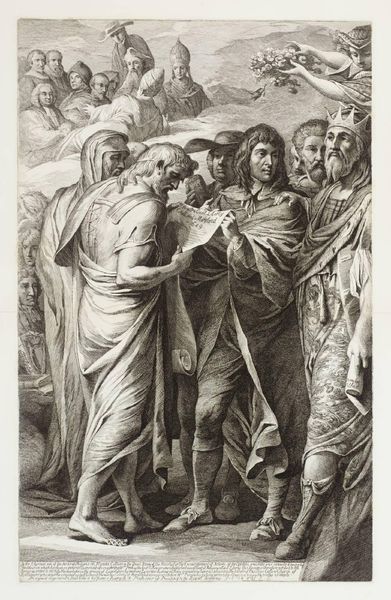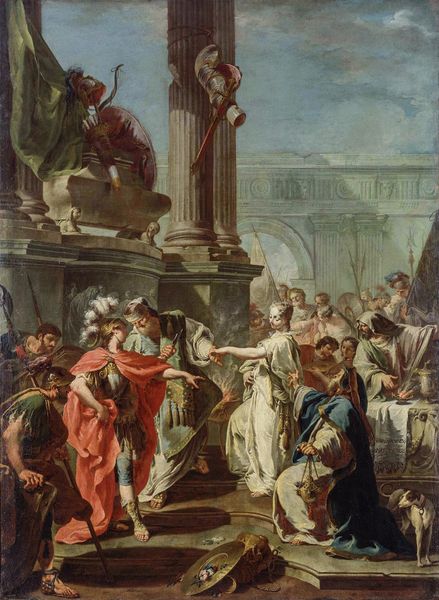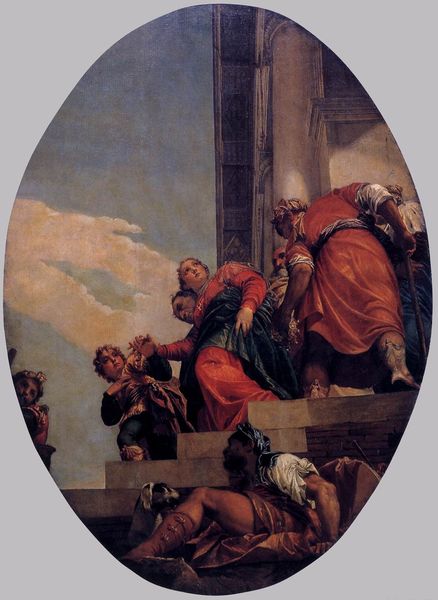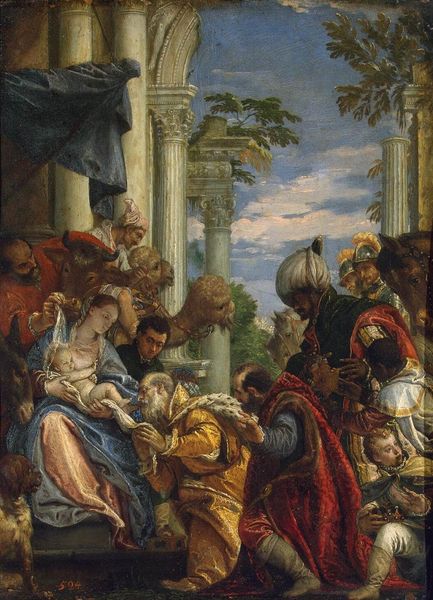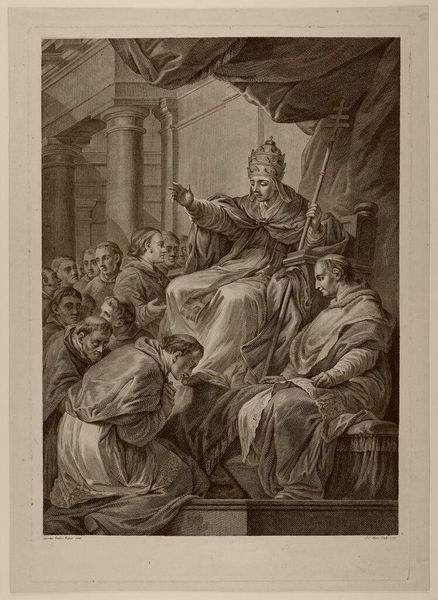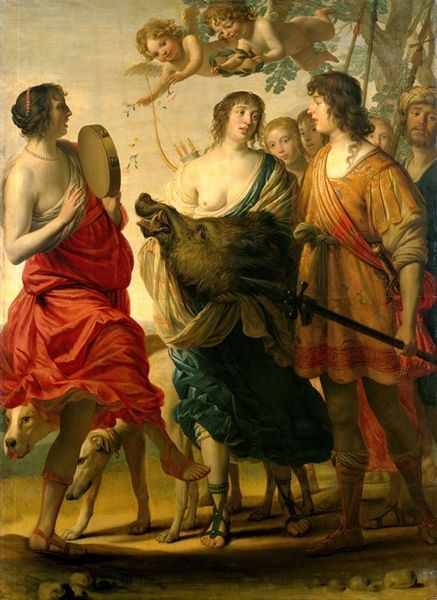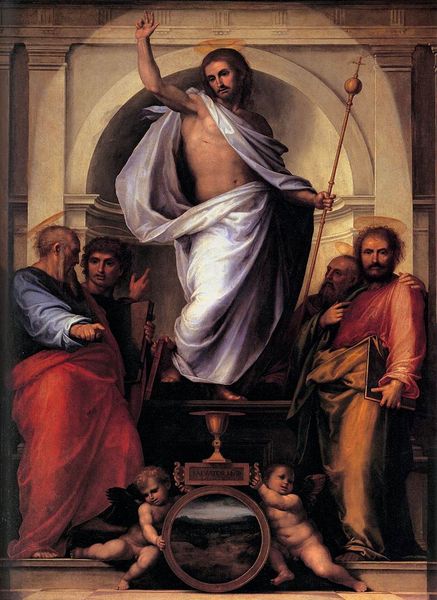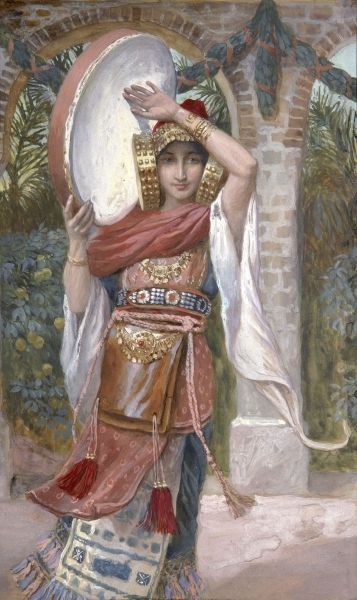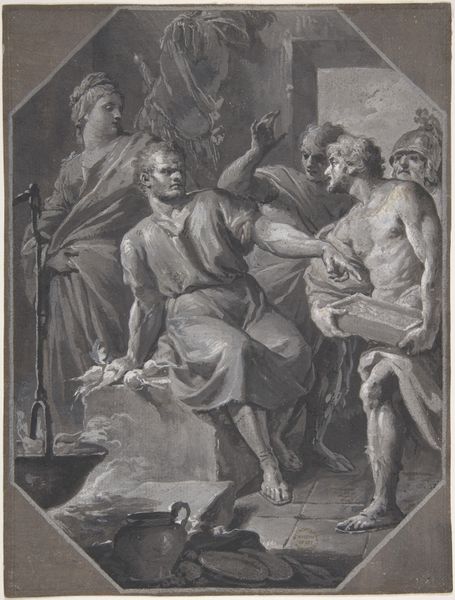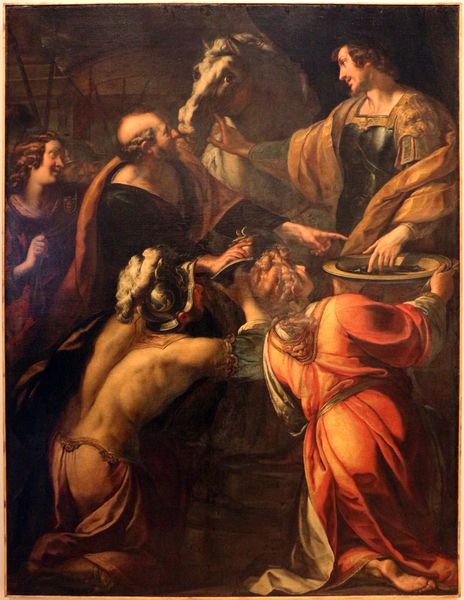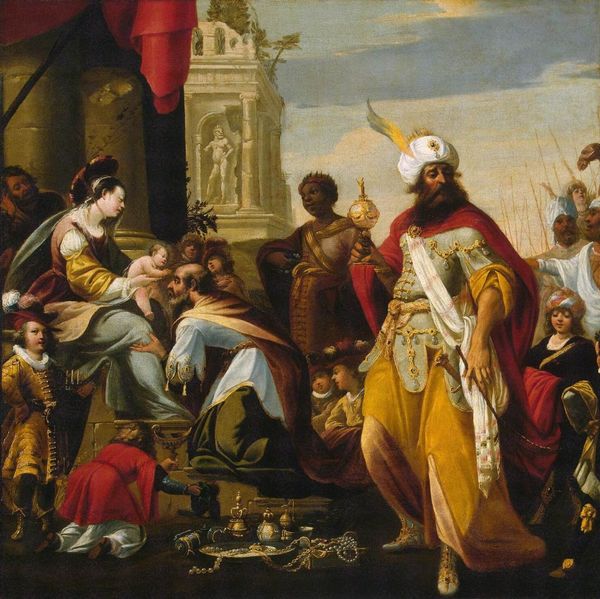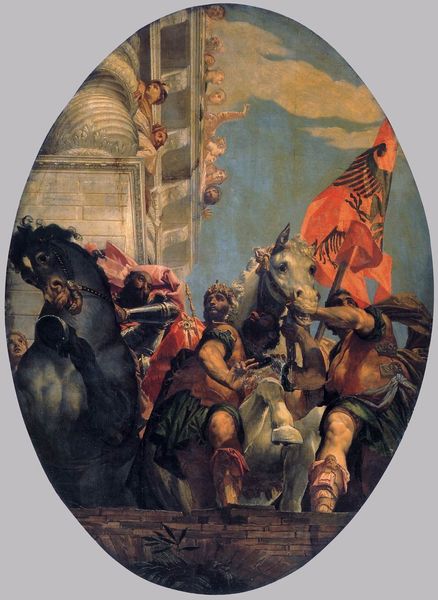
painting, oil-paint
#
portrait
#
painting
#
oil-paint
#
figuration
#
oil painting
#
history-painting
#
italian-renaissance
#
portrait art
Copyright: Public domain
Editor: Here we have Jacopo Bassano’s "Three Martyr Saints," created around 1578, using oil paint. It has such a serene quality, but there's also a gravity to it, perhaps in their postures. What's most striking to you about this painting? Curator: For me, it’s the palpable tension between the rich materiality depicted and the ascetic ideals the painting supposedly promotes. Look at the sumptuous folds of the robes, the gleaming gold trim, juxtaposed against the supposed self-denial of martyrdom. What's being consumed here? Is it faith, or is it an idealized representation for wealthy patrons? Editor: So, you're questioning the relationship between the Church's wealth and the image of saintly poverty being presented? Curator: Exactly! And consider the oil paint itself, a costly material, painstakingly applied to create this illusion. The labor involved, the social context of artistic production in 16th century Italy... it all points to a complex economic and material reality behind this seemingly straightforward devotional image. How does that impact our interpretation? Editor: It really reframes the artwork. I initially saw piety, but now I am much more aware of the opulence, the craft, and really, who was able to access these types of artworks. Curator: Precisely. The artist wasn't creating in a vacuum, and the materials chosen speak volumes about the economic and social landscape of the time. This focus allows us to unpack the historical narrative. Editor: I'll definitely look at art differently now! Thinking about the physical materials used to create meaning shifts my perspective completely. Curator: And that awareness allows for a much deeper and richer appreciation. Considering art in relation to materiality and production broadens the dialogue around historical and contemporary art.
Comments
No comments
Be the first to comment and join the conversation on the ultimate creative platform.
